Have you ever wondered about the rich biodiversity hidden within Mexico’s mangrove forests? These vast and diverse ecosystems are home to a plethora of plants and animals, making them a must-see for nature enthusiasts. In this article, we will delve into the vibrant world of Mexico’s mangrove forests and uncover the amazing variety of life that exists within them.
Mexico’s mangrove forests are truly treasure troves of biodiversity. The combination of saltwater and freshwater creates a unique environment that supports a wide array of plant and animal species. Mangrove trees, with their distinctive prop roots, dominate the landscape, providing shelter and protection for countless organisms. As you venture deeper into these forests, you will encounter a myriad of fascinating creatures. From colorful birds and reptiles to elusive mammals and intricate coral reefs, there is no shortage of wonders to behold. Whether you are an avid nature lover or simply curious about the diverse ecosystems of our planet, exploring Mexico’s mangrove forests will undoubtedly leave you in awe of the incredible biodiversity that thrives in these coastal havens. So, join us as we embark on a journey to discover the hidden gems of Mexico’s mangrove forests.
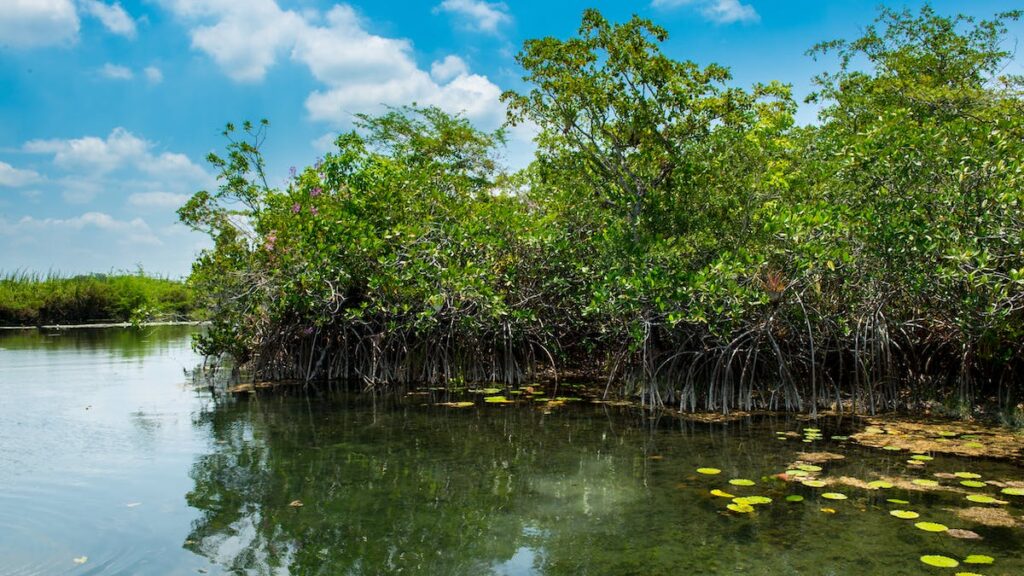
Introduction to Mexico’s Mangrove Forests
Mexico is home to some of the most diverse and unique ecosystems in the world, and one of these extraordinary habitats is its mangrove forests. These coastal wetlands, found along the Gulf of Mexico and the Pacific Ocean, are teeming with an abundance of biodiversity, making them a remarkable destination for nature lovers and scientists alike.
What are mangrove forests?
Mangrove forests are a type of coastal wetland ecosystem characterized by the presence of mangrove trees. These trees have adapted to survive in the intertidal zone, where they are constantly exposed to the ebb and flow of the tide. This unique environment has shaped the mangroves’ physical characteristics and biological processes, allowing them to thrive in conditions that would be inhospitable to most other plants.
Global significance of mangrove forests
Mangrove forests are of global significance due to their numerous ecological services and benefits. They act as natural buffers against storms, protecting coastal communities from the destructive forces of waves and hurricanes. Additionally, mangroves are highly efficient carbon sinks, helping to mitigate climate change by sequestering vast amounts of carbon dioxide from the atmosphere. Furthermore, these forests serve as critical nurseries for various species of fish and other marine organisms, contributing to the overall biodiversity and health of coastal ecosystems.
Location of mangrove forests in Mexico
Mexico is blessed with an extensive coastline that stretches over 9,000 kilometers, providing a suitable habitat for mangrove forests. These forests can be found in various regions of the country, including the Yucatan Peninsula, the Gulf of California, and the Pacific Coast. Some of the most significant mangrove areas in Mexico are located in the biosphere reserves of Sian Ka’an in Quintana Roo, Ría Lagartos in Yucatan, and Marismas Nacionales in Nayarit.
Flora and Fauna in Mexico’s Mangrove Forests
Diverse plant species in mangrove forests
Mexico’s mangrove forests harbor a remarkable diversity of plant species, each uniquely adapted to the challenging coastal environment. The most common mangrove species found in Mexico include the red mangrove (Rhizophora mangle), the white mangrove (Laguncularia racemosa), the black mangrove (Avicennia germinans), and the buttonwood mangrove (Conocarpus erectus). These trees play a vital role in stabilizing the coastline, preventing erosion, and providing habitats for numerous animal species.
Unique adaptations of mangrove plants
Mangrove trees have evolved fascinating adaptations to survive in their harsh intertidal habitat. Their roots, for instance, are specially adapted to breathe in the oxygen-deprived mud by developing structures called pneumatophores. These tall, finger-like projections rise above the water surface, allowing the trees to take in oxygen for respiration. Additionally, mangrove leaves have a unique ability to excrete salt, enabling them to thrive in brackish water.
Abundant animal species in mangrove ecosystems
The dense mangrove forests of Mexico provide a safe haven for a wide array of animal species, from birds and reptiles to mammals and invertebrates. These ecosystems are a hotspot for birdwatching enthusiasts, with over 260 species of birds recorded in Mexican mangroves. Some of the notable avian residents include the colorful roseate spoonbill (Platalea ajaja), the majestic frigatebird (Fregata magnificens), and the elusive and endangered Caribbean migrant, the black-capped vireo (Vireo atricapilla).
Endangered and rare species found in Mexican mangroves
Mexico’s mangrove forests are also home to several endangered and rare species that are of immense conservation concern. One such species is the hawksbill sea turtle (Eretmochelys imbricata), whose population has been severely impacted by habitat loss and unsustainable fishing practices. These turtles rely on the mangrove forests for their nesting grounds and foraging areas, making the preservation of these ecosystems crucial for their survival. Other endangered species found in Mexican mangroves include the white-lipped peccary (Tayassu pecari) and the Mexican clearwing (Greta mexicana), a stunning butterfly species endemic to the region.
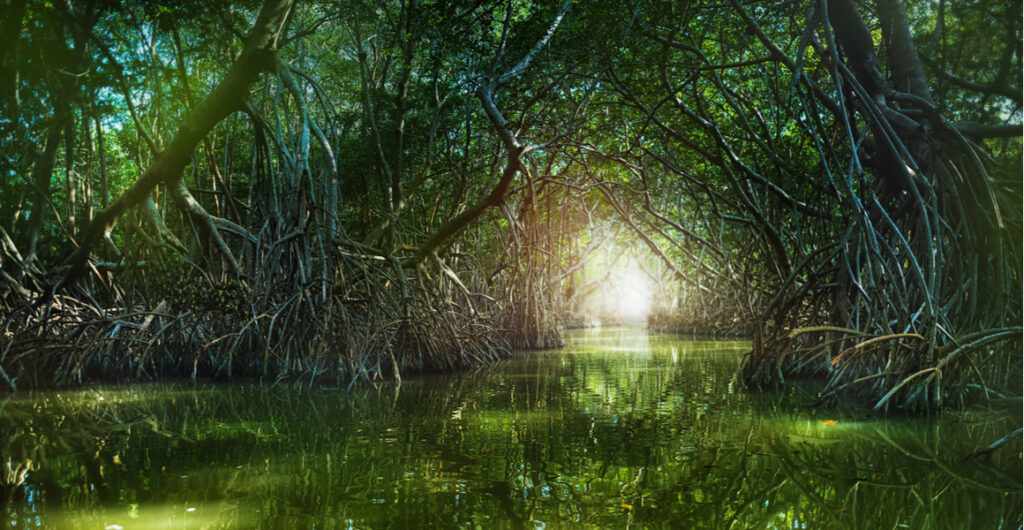
Ecological Importance of Mexican Mangrove Forests
Role of mangroves in coastal protection
Mexican mangrove forests play a vital role in protecting coastal communities and ecosystems from the destructive forces of storms and hurricanes. The dense network of mangrove roots acts as a natural barrier, reducing the impact of waves and dissipating their energy. This coastal protection function is particularly crucial in regions prone to strong tropical storms, such as the Yucatan Peninsula. The loss of mangroves due to deforestation and urban development increases the vulnerability of these areas to erosion and storm damage.
Carbon sequestration by mangrove forests
Mangrove forests are highly efficient carbon sinks, capable of sequestering vast amounts of carbon dioxide from the atmosphere and storing it in their soils for centuries. The dense vegetation and organic-rich soils in mangrove ecosystems contribute to their remarkable carbon storage capacity. Protecting and restoring these forests is essential for mitigating climate change and reducing greenhouse gas emissions. Efforts are underway in Mexico to quantify the carbon stocks and develop strategies for the sustainable management of mangrove forests.
Nurseries for fish and other marine species
Mexican mangroves serve as important nurseries for various species of fish, crustaceans, and other marine organisms. The intricate network of roots and submerged plant matter provides a safe and nutrient-rich environment for the early stages of many marine species’ lives. Mangrove forests also offer abundant food sources, shelter, and protection from predators, contributing to the overall productivity and health of coastal fisheries. The loss of mangroves can have severe consequences for the fish populations that rely on these habitats for reproduction and growth.
Contribution to overall biodiversity in Mexico
Mexico is known for its incredible biodiversity, and mangrove forests contribute significantly to this richness of life. These ecosystems provide habitat for countless species of plants, invertebrates, reptiles, birds, and mammals, many of which are endemic to the region. Their intricate and interconnected web of life supports the ecological balance and resilience of coastal ecosystems. Conserving and protecting mangroves is crucial to safeguard Mexico’s unique biodiversity and ensure the long-term health of these vital ecosystems.
Threats to the Mangrove Ecosystems in Mexico
Deforestation and urban development
One of the primary threats to Mexico’s mangrove forests is deforestation for urban development and agriculture. The expansion of tourist resorts, marinas, and infrastructure along the coast often comes at the expense of these valuable ecosystems. Deforestation disrupts the delicate balance of mangrove habitats, destroys nesting and foraging grounds for wildlife, and increases the risk of coastal erosion and flooding. Efforts are being made to implement stricter regulations and land-use planning to minimize the impacts of urban development on mangrove forests.
Pollution and contamination
Mangroves are also threatened by pollution from industrial and agricultural activities, as well as from plastic and solid waste that accumulates in coastal areas. Pollution can have detrimental effects on mangrove plants and animals, disrupting their reproductive cycles, compromising their immune systems, and impairing their overall health. The unsustainable use of pesticides and chemical fertilizers in the surrounding agriculture can lead to runoff and contamination of mangrove waters, further exacerbating the problem.
Climate change impacts
The impacts of climate change, including rising sea levels, increased storm frequency and intensity, and changes in precipitation patterns, pose a significant threat to mangrove ecosystems in Mexico. Rising sea levels can lead to saltwater intrusion into freshwater aquifers, resulting in soil and water salinization. Changes in precipitation patterns can further alter the delicate balance of mangrove ecosystems, affecting plant growth and species composition. Efforts are underway to understand and mitigate the impacts of climate change on mangrove forests through adaptive management strategies.
Overfishing and destructive fishing practices
Overfishing and destructive fishing practices, such as blast fishing and the use of unsustainable gear, pose a significant threat to the ecological integrity of Mexico’s mangrove forests. The indiscriminate capture of fish and other marine species can disrupt the delicate food webs and ecological interactions within these ecosystems. Implementing effective fisheries management strategies and promoting sustainable fishing practices are crucial for maintaining the balance between resource extraction and conservation in mangrove fisheries.
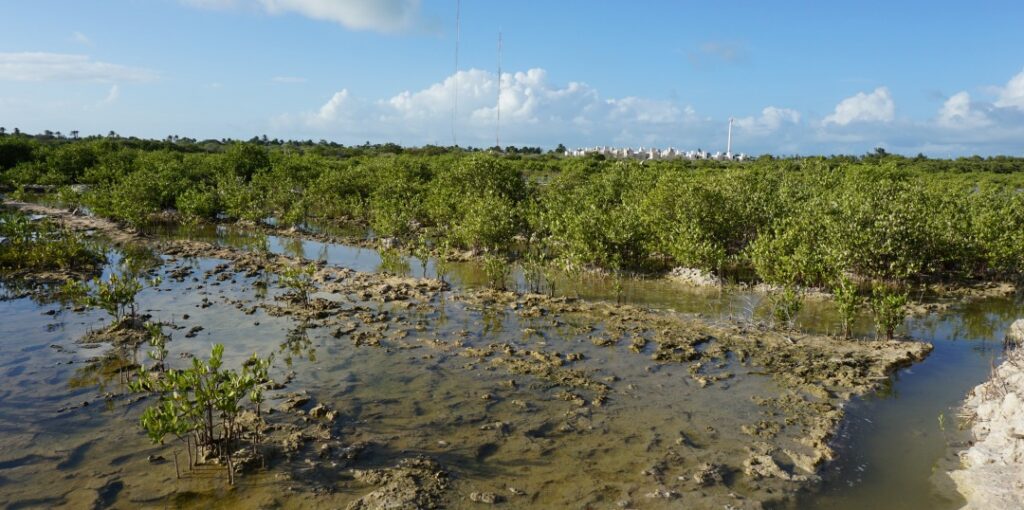
Conservation Efforts in Mexican Mangrove Forests
Protected areas and national parks
Mexico has made significant strides in the conservation of mangrove ecosystems through the establishment of protected areas and national parks. These designated areas aim to safeguard the biodiversity and ecological integrity of mangrove forests while allowing for sustainable use and tourism. For example, the Sian Ka’an Biosphere Reserve in Quintana Roo, a UNESCO World Heritage Site, protects a vast expanse of mangrove forests, along with coral reefs and other unique ecosystems. It serves as a model for integrated conservation and sustainable development in the region.
Community-based conservation initiatives
Engaging local communities in the conservation and sustainable management of mangrove forests is essential for long-term success. Many community organizations and indigenous groups in Mexico have taken the lead in mangrove conservation, implementing initiatives that combine traditional knowledge and scientific research. These community-based conservation efforts not only protect the mangroves but also provide sustainable livelihoods for the local residents through eco-tourism and sustainable resource use.
Government policies and regulations
The Mexican government has implemented various policies and regulations to protect and sustainably manage mangrove ecosystems. National laws, such as the General Law on Ecological Equilibrium and Environmental Protection, provide a legal framework for the conservation and sustainable use of mangrove forests. Additionally, international agreements like the Ramsar Convention on Wetlands and the Convention on Biological Diversity, to which Mexico is a signatory, provide guidance and support for mangrove conservation efforts.
International collaborations for mangrove conservation
Mexico has also actively collaborated with international organizations and initiatives to enhance mangrove conservation. The Global Mangrove Alliance, a partnership of governments, NGOs, and businesses, aims to promote the conservation and restoration of mangrove ecosystems worldwide. Mexico’s participation in this alliance has led to increased funding, knowledge sharing, and technical support for mangrove conservation projects in the country.
Traditional and Cultural Significance of Mangroves in Mexico
Indigenous knowledge and practices
Mangroves hold deep cultural and historical significance for many Indigenous communities in Mexico. These communities have developed traditional knowledge and practices that sustainably utilize the resources provided by mangrove forests. Traditional fishing, artisanal crafts, and medicinal remedies are just a few examples of the multifaceted ways in which mangroves are integrated into the lives and traditions of Indigenous peoples. Preserving and respecting this traditional knowledge is essential for maintaining the cultural heritage associated with mangrove ecosystems.
Mangroves in local folklore and spirituality
Mangroves are often woven into the fabric of local folklore and spirituality in Mexico. They are believed to be sacred places, inhabited by mystical beings and guardian spirits. Many communities have stories and legends that highlight the importance of mangroves as symbolic and spiritual landmarks. Recognizing and appreciating the spiritual and cultural significance of mangroves can help foster a deeper understanding and connection to these ecosystems among local communities and visitors alike.
Traditional uses of mangrove resources
For centuries, local communities in Mexico have relied on mangrove resources for their sustenance and livelihoods. The wood of mangrove trees has been used for construction, furniture, and fuelwood, while the leaves and bark have medicinal properties. The abundant seafood found in mangrove ecosystems has been a vital source of protein and sustenance for coastal communities. Balancing traditional resource use with conservation efforts is crucial to ensure the long-term sustainability of mangrove ecosystems and the communities that depend on them.
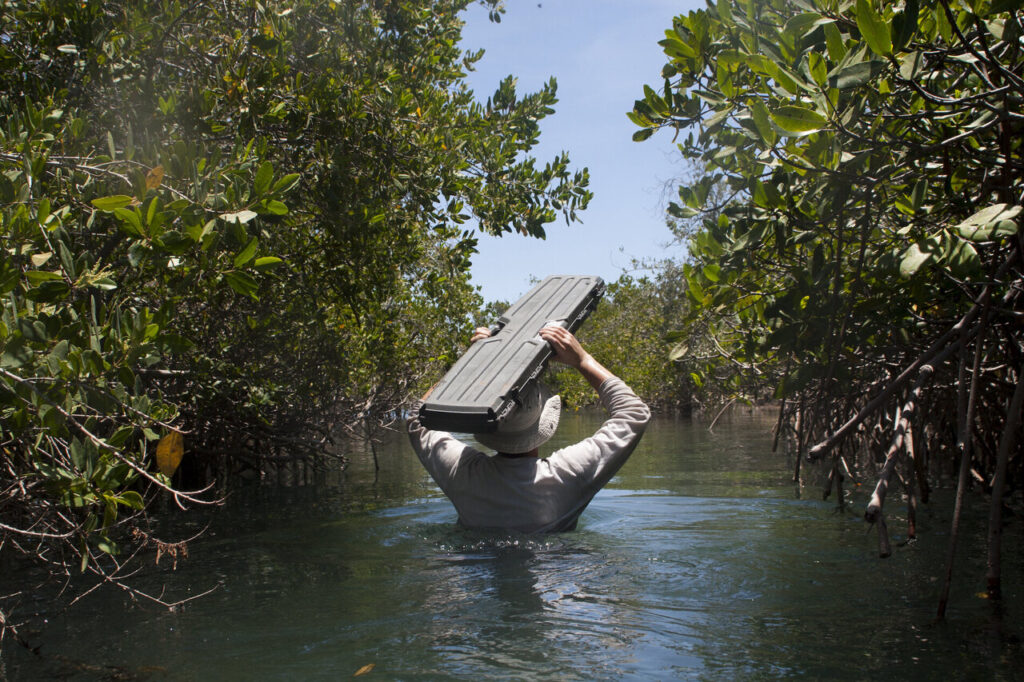
Exploring Mexico’s Mangrove Forests
Popular mangrove destinations in Mexico
Mexico offers a plethora of stunning destinations for exploring its mangrove forests. From the turquoise waters of the Yucatan Peninsula to the lush Pacific Coast, there are numerous opportunities to immerse yourself in the beauty and serenity of these unique ecosystems. Some popular mangrove destinations include Celestun and Sian Ka’an in Quintana Roo, La Encrucijada Biosphere Reserve in Chiapas, and the Balandra lagoon in Baja California Sur. Each destination offers its distinct characteristics and attractions, providing visitors with a diverse range of experiences.
Guided tours and eco-tourism opportunities
Guided tours and eco-tourism initiatives provide visitors with an opportunity to explore Mexico’s mangroves while minimizing their impact on the delicate ecosystems. Knowledgeable guides lead visitors on boat or kayak tours, providing insights into the flora, fauna, and ecological processes that make these habitats so unique. These tours not only offer a chance to observe the incredible biodiversity but also educate visitors about the importance of conservation and sustainable management.
Activities and attractions in Mexican mangroves
Mexican mangroves offer a wide range of activities and attractions for nature enthusiasts and adventure seekers alike. Snorkeling and diving in the crystal-clear waters reveal vibrant coral reefs and an array of marine life. Birdwatching enthusiasts can spot rare and migratory species, while wildlife photographers can capture stunning images of crocodiles, dolphins, and monkeys. Some mangrove areas also offer hiking trails, beachcombing, and camping opportunities, allowing visitors to fully immerse themselves in the beauty and tranquility of these ecosystems.
Research and Scientific Studies on Mexican Mangroves
Biodiversity surveys and monitoring
Scientists and researchers have conducted numerous biodiversity surveys and monitoring studies in Mexican mangrove forests to better understand their ecology and promote their conservation. These studies assess the abundance and distribution of flora and fauna, track changes over time, and identify key environmental factors that influence mangrove health. Biodiversity surveys and monitoring efforts provide valuable data for conservation planning, informing management strategies and policy decisions.
Mangrove ecosystem dynamics
Understanding the dynamics of mangrove ecosystems is critical for their effective conservation and management. Researchers study processes such as seed dispersal, sedimentation, and nutrient cycling to unravel the intricate ecological interactions within these habitats. They investigate how mangrove forests respond to environmental changes, such as sea level rise and climate variability, and assess their resilience and adaptive capacity. This knowledge helps develop strategies to protect and restore mangrove ecosystems in the face of ongoing challenges.
Impact of human activities on mangrove ecosystems
Human activities have had both direct and indirect impacts on Mexico’s mangrove ecosystems. Scientists study the effects of deforestation, pollution, and overfishing on mangrove health, biodiversity, and ecosystem services. They assess the effectiveness of conservation measures and examine the socio-economic factors that drive mangrove degradation. Research on the impact of human activities contributes to evidence-based decision-making and supports the development of sustainable management practices.
Conservation and restoration studies
Conservation and restoration studies focus on developing effective strategies and methodologies to preserve and restore mangrove ecosystems in Mexico. These studies explore techniques for mangrove rehabilitation, including reforestation efforts and the removal of invasive species. They also evaluate the success of different restoration approaches and monitor the long-term ecological outcomes. Conservation and restoration studies inform best practices for mangrove management and contribute to the overall conservation goals for these vital ecosystems.
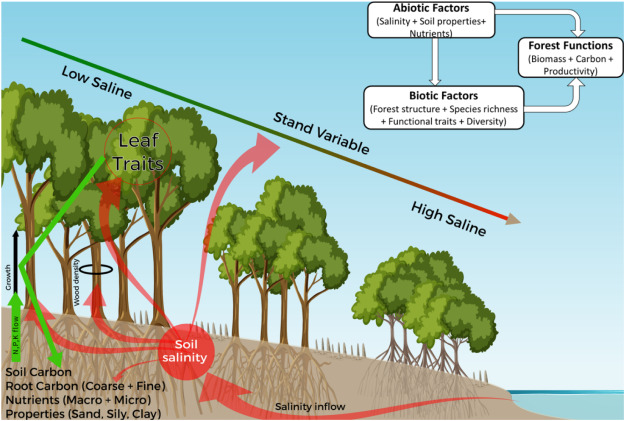
Sustainable Use of Mangrove Resources in Mexico
Balancing resource extraction and conservation
The sustainable use of mangrove resources is a delicate balancing act that requires careful management and planning. While mangrove ecosystems provide valuable resources for local communities, such as timber and seafood, overexploitation can lead to the degradation of these habitats. Implementing sustainable fishing practices, promoting responsible resource extraction, and establishing quotas and regulations are crucial for maintaining the ecological integrity of Mexican mangroves while meeting the needs of the local communities.
Traditional and modern uses of mangrove products
Mangrove trees provide a plethora of products that have been utilized by local communities for centuries. Traditional uses include the construction of houses and boats, the production of artisanal crafts, and the extraction of medicinal compounds from various parts of the trees. In recent years, alternative uses of mangrove products, such as eco-friendly construction materials and natural dyes, have gained attention as sustainable alternatives to conventional products. These innovative uses provide economic opportunities while reducing the pressure on mangrove resources.
Community-based sustainable livelihoods
Empowering local communities to develop sustainable livelihoods that are directly linked to mangrove conservation is crucial for ensuring the long-term preservation of these ecosystems. Community-based initiatives, such as eco-tourism and artisanal businesses, provide income-generating opportunities that are compatible with the sustainable use of mangrove resources. Supporting and promoting these initiatives can alleviate poverty, reduce dependence on unsustainable practices, and foster a sense of stewardship among the local communities.
Challenges and Future Outlook for Mexican Mangroves
Ensuring long-term conservation
The long-term conservation of Mexican mangroves faces various challenges, including increasing urban development, pollution, and climate change. Balancing the needs of economic development with conservation priorities requires stronger regulations, effective enforcement, and better land-use planning. Enhancing public awareness, engaging local communities, and strengthening international collaborations will be crucial for safeguarding these valuable ecosystems for future generations.
Adaptation strategies for climate change
As climate change continues to pose threats to mangrove ecosystems, implementing adaptation strategies is essential for their survival. Enhancing the resilience of mangrove forests through restoration efforts, reforestation, and the creation of buffer zones can help these ecosystems withstand the impacts of rising sea levels and changing climate patterns. Integrating climate change considerations into conservation policies and management plans is crucial for ensuring the long-term viability of Mexican mangroves.
Sustainable tourism and economic development
The promotion of sustainable tourism and responsible economic development can generate economic benefits while safeguarding mangrove ecosystems. By implementing eco-tourism practices that minimize environmental impacts, respect local communities, and contribute to conservation efforts, Mexico can create economic incentives for the preservation of these valuable habitats. Supporting small-scale enterprises, developing capacity-building programs, and fostering partnerships with the private sector are also vital for sustainable tourism development in mangrove areas.
Engaging local communities in conservation efforts
Effective conservation of mangrove forests in Mexico requires the active participation and engagement of local communities. Empowering communities through education, training, and the recognition of their rights can foster a sense of ownership and responsibility for the protection of these ecosystems. Involving local communities in decision-making processes, allowing them access to sustainable resource use, and providing economic opportunities can create a sense of shared stewardship and ensure the long-term conservation of Mexican mangrove forests.
Importance of Public Awareness and Education
Educating communities and tourists about mangroves
Raising public awareness about the significance of mangrove ecosystems is critical for their conservation. Educational programs and initiatives can target local communities, schools, and tourists, providing them with information about the ecological importance of mangroves and inspiring them to take action. Public awareness campaigns can highlight the benefits of sustainable resource use, responsible tourism practices, and the preservation of cultural traditions associated with mangrove ecosystems.
Promoting environmental awareness and stewardship
Promoting environmental awareness and fostering a sense of stewardship among individuals are essential for the long-term conservation of mangrove forests in Mexico. Environmental education programs can engage children and adults alike, instilling in them a deep appreciation for the natural world and empowering them to become advocates for change. By nurturing a culture of environmental responsibility, Mexico can create a society that values and protects its unique natural heritage.
Involving youth in conservation initiatives
Involving youth in conservation initiatives is crucial for building a sustainable future for Mexican mangrove ecosystems. Young people have a unique perspective and creativity that can contribute to innovative solutions and inspire positive change. Youth-led initiatives, such as research projects, clean-up campaigns, and community-based conservation programs, can empower the younger generation to take an active role in protecting and advocating for the preservation of mangrove forests.
The Role of Sustainable Tourism in Mangrove Conservation
Benefits and challenges of eco-tourism
Sustainable tourism has the potential to provide numerous benefits for mangrove conservation, local communities, and the tourism industry. Eco-tourism practices that prioritize environmental sustainability, cultural sensitivity, and community involvement can generate revenue without degrading the natural and cultural heritage of mangrove forests. However, challenges, such as maintaining a delicate balance between visitor access and habitat protection, promoting responsible tourist behavior, and minimizing the carbon footprint of tourist activities, need to be addressed to ensure the long-term sustainability of eco-tourism initiatives.
Promoting responsible tourism practices
Promoting responsible tourism practices in Mexican mangrove areas is essential for minimizing negative impacts on the ecosystems. Tour operators, accommodation providers, and governments can play a crucial role in ensuring that tourists are educated about the fragility of mangrove ecosystems and encouraged to follow sustainable practices. These include respecting designated trails and viewing areas, avoiding the disturbance of wildlife, and minimizing waste and pollution. Implementing certification schemes and codes of conduct can help guide tourists and operators towards responsible behavior.
Creating economic incentives for conservation
Creating economic incentives for conservation is a key driver in ensuring the long-term preservation of mangrove forests. Sustainable tourism can provide financial benefits to local communities, encouraging them to actively participate in the protection of these habitats. Revenue generated from eco-tourism activities can be reinvested in conservation efforts, community development, and education programs. By demonstrating the economic value of intact mangrove ecosystems, Mexico can foster a greater appreciation for their long-term preservation.
Case studies of successful mangrove tourism projects
Several successful mangrove tourism projects in Mexico serve as examples of how sustainable tourism can contribute to conservation goals. The Sian Ka’an Biosphere Reserve in Quintana Roo, for instance, has implemented an eco-tourism model that combines visitor experiences with local community involvement, scientific research, and conservation activities. Other success stories include the development of community-based tourism initiatives in the Ría Lagartos Biosphere Reserve and the collaboration between tour operators and conservation organizations in the Marismas Nacionales Biosphere Reserve. These examples illustrate the potential of sustainable tourism in promoting the conservation of mangrove ecosystems.
Conclusion
Mexico’s mangrove forests are a treasure trove of biodiversity and ecological importance. These unique coastal wetlands provide critical coastal protection, sequester carbon, and harbor abundant plant and animal species. However, they face numerous threats, including deforestation, pollution, climate change, and overfishing. Through conservation efforts, sustainable use of resources, and the promotion of responsible tourism practices, Mexico can preserve these valuable ecosystems for future generations. Unveiling the abundance of biodiversity in Mexico’s mangrove forests requires a collective effort, involving government agencies, local communities, tourists, and international collaborations. It is time to recognize the ecological, cultural, and economic value of mangroves and take a stand for their long-term conservation. Together, we can ensure the continued existence and thriving future of Mexico’s mangrove forests.
